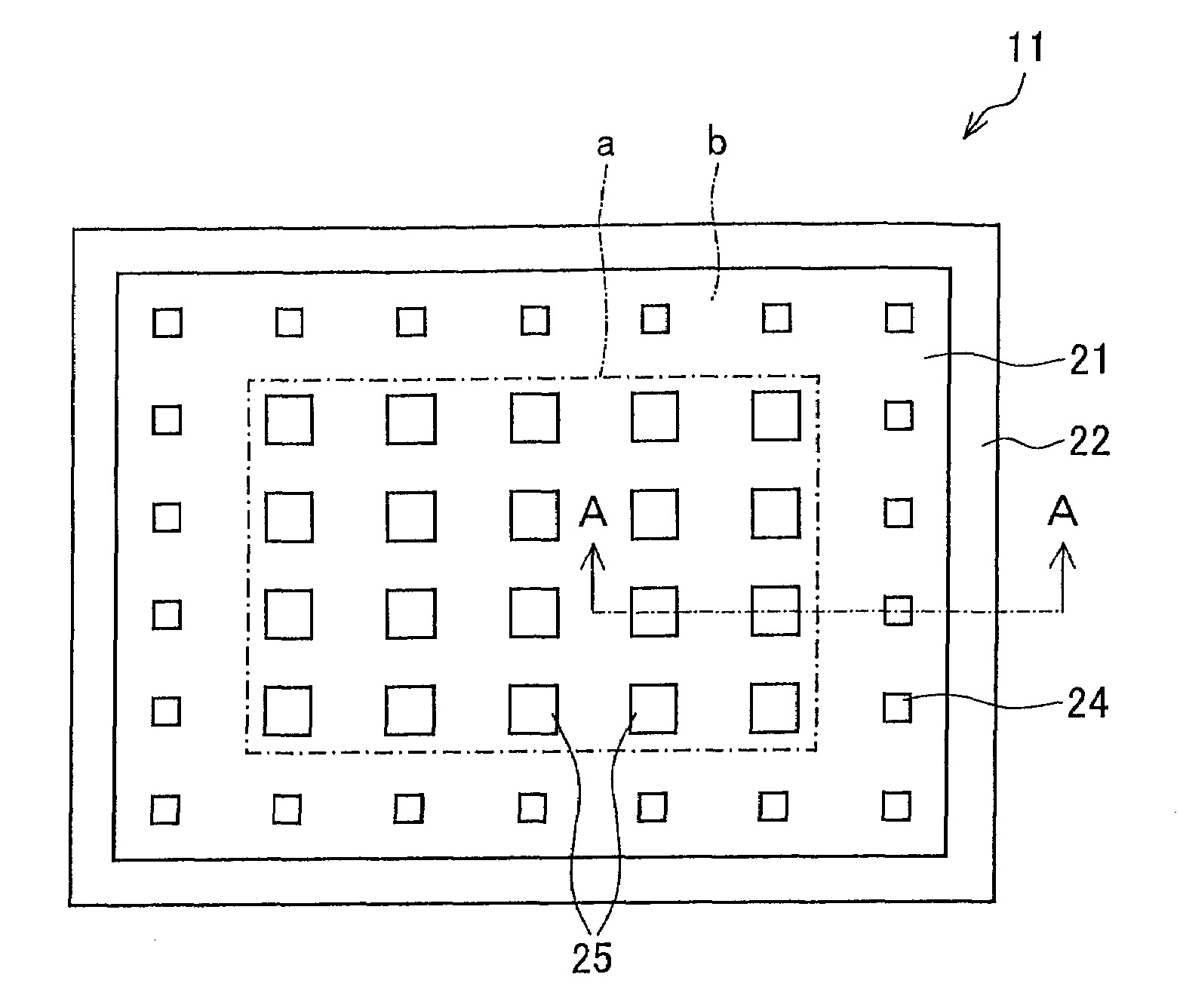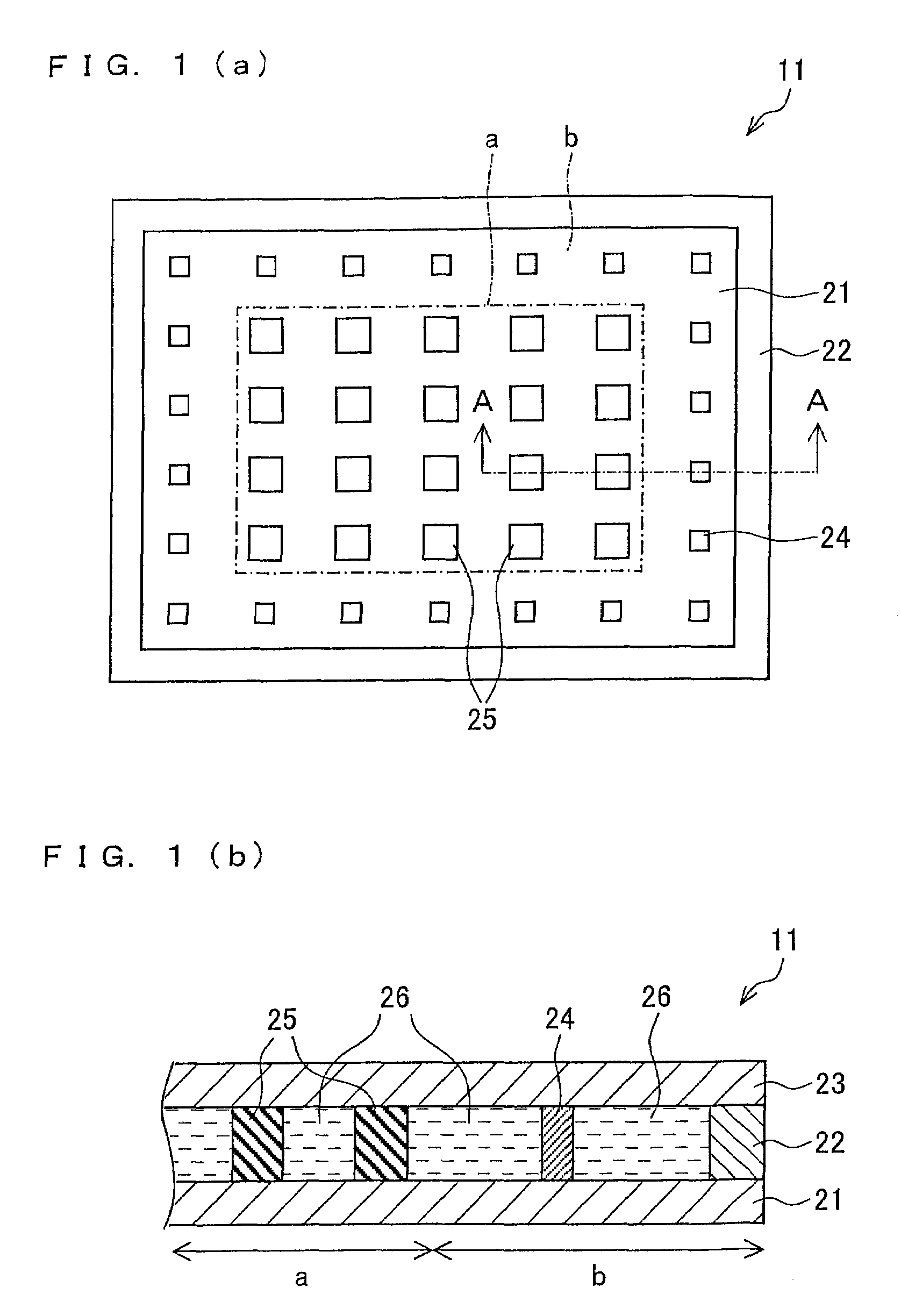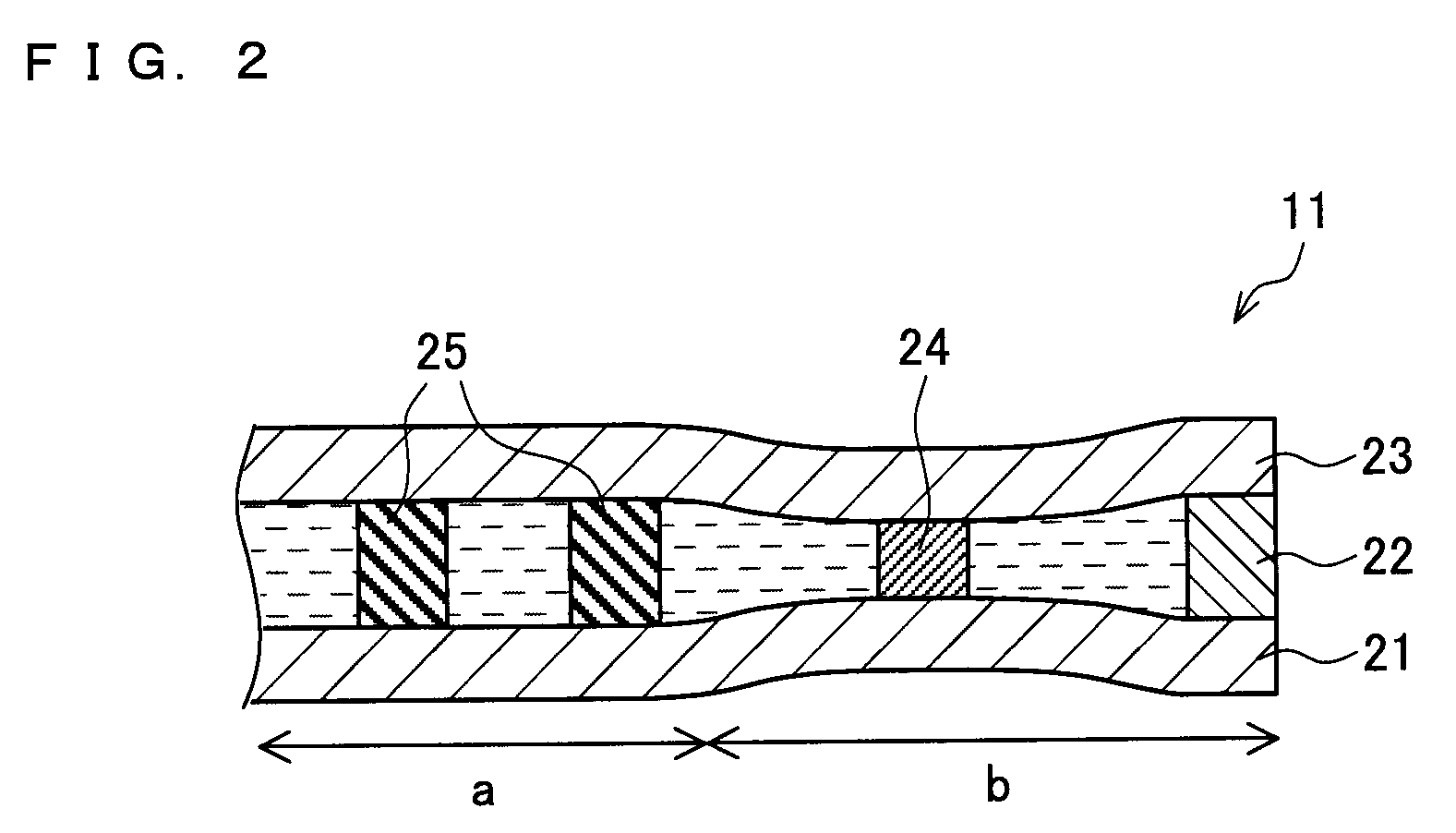Liquid crystal display element
a technology of liquid crystal display element and liquid crystal, which is applied in the direction of non-linear optics, instruments, optics, etc., can solve the problems of panel reliability, the capacity of the panel cannot keep pace with a change in the volume of liquid crystals, and the substrate between which the cell gap is controlled with the columnar spacer cannot be deformed, so as to prevent the reliability of the panel
- Summary
- Abstract
- Description
- Claims
- Application Information
AI Technical Summary
Benefits of technology
Problems solved by technology
Method used
Image
Examples
example 1
[0086]In this example, the first columnar spacers are provided across the whole panel so as to be each positioned in a black matrix portion of each pixel and so as to be each in the shape of an angular column having a height of 4.5 μm and an area of base of 10×20 μm. The height of the first columnar spacers is determined by the needed cell gap, and the area and density of the first columnar spacers are determined in accordance with substrate hardness and spacer elasticity so that the needed panel strength (needed degree of resistance to pressure) is obtained. The total area of the spacers is determined in this manner, and is usually not less than 0.5% per unit area. When it is not necessary to consider substrate deformation that is due to local external pressure, a uniform cell gap can be realized as long as the total area of the spacers is not less than 0.11%. However, in order to achieve such strength that external pressure such as pen-based input or the like are sufficiently with...
example 2
[0090]In this example, the first columnar spacers are provided across the whole panel so as to be each positioned in a black matrix portion of each pixel and so as to be each in the shape of an angular column having a height of 4.5 μm and an area of base of 10×20 μm. The height of the first columnar spacers is determined by the needed cell gap, and the area and density of the first columnar spacers are determined in accordance with substrate hardness and spacer elasticity so that the needed panel strength (needed degree of resistance to pressure) is obtained. The total area of the spacers is determined in this manner, and is usually not less than 0.5% per unit area. When it is not necessary to consider substrate deformation that is due to local external pressure, a uniform cell gap can be realized as long as the total area of the spacers is not less than 0.1%. However, in order to achieve such strength that external pressure such as pen-based input or the like are sufficiently withs...
example 3
[0094]In this example, the first columnar spacers are provided across the whole panel so as to be each positioned in a black matrix portion of each pixel and so as to be each in the shape of an angular column having a height of 4.5 μm and an area of base of 10×20 μm. The height of the first columnar spacers is determined by the needed cell gap, and the area and density of the first columnar spacers are determined in accordance with substrate hardness and spacer elasticity so that the needed panel strength (needed degree of resistance to pressure) is obtained. The total area of the spacers is determined in this manner, and is usually not less than 0.5% per unit area. When it is not necessary to consider a substrate deformation that is due to local external pressure, a uniform cell gap can be realized as long as the total area of the spacers is not less than 0.1%. However, in order to achieve such strength that external pressure such as pen-based input or the like are sufficiently wit...
PUM
| Property | Measurement | Unit |
|---|---|---|
| height | aaaaa | aaaaa |
| height | aaaaa | aaaaa |
| height | aaaaa | aaaaa |
Abstract
Description
Claims
Application Information
 Login to view more
Login to view more - R&D Engineer
- R&D Manager
- IP Professional
- Industry Leading Data Capabilities
- Powerful AI technology
- Patent DNA Extraction
Browse by: Latest US Patents, China's latest patents, Technical Efficacy Thesaurus, Application Domain, Technology Topic.
© 2024 PatSnap. All rights reserved.Legal|Privacy policy|Modern Slavery Act Transparency Statement|Sitemap



